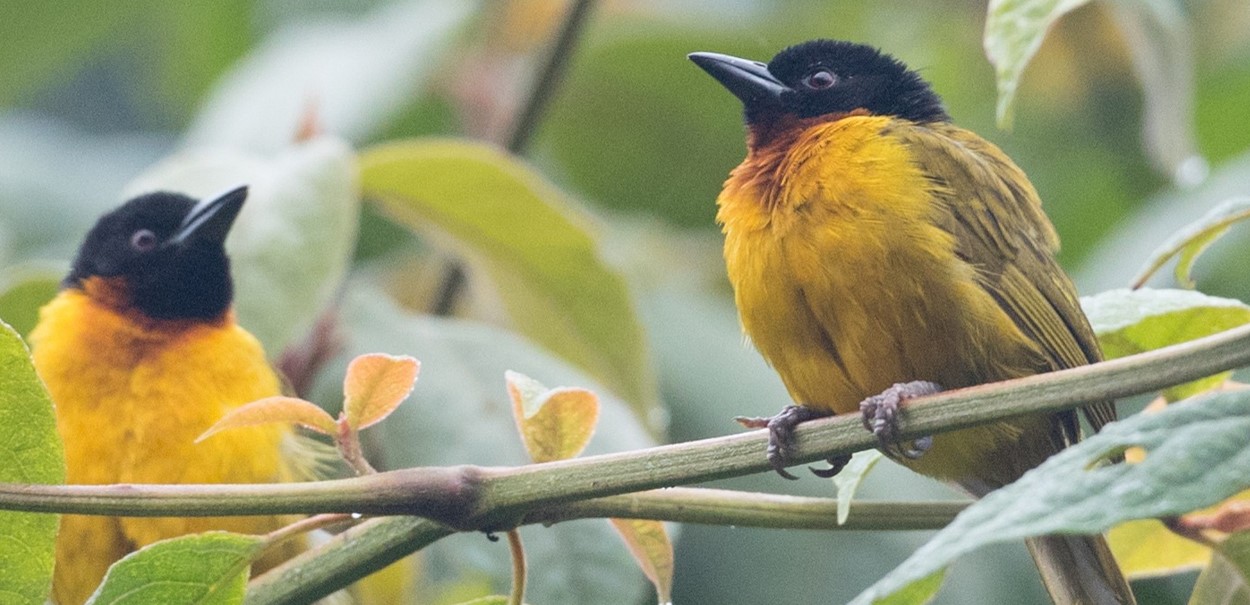
The Strange Weaver in Uganda
The Strange Weaver in Uganda: Uganda is popular for its breathtaking scenery, abundant wildlife, and dynamic cultures. One species, the Strange Weaver (Ploceus tricolour), stands out among the many bird wonders that call this East African country home. In addition to being a prominent character in ornithology, this remarkable bird, which is decked in a brilliant rainbow of hues, is also a symbol of Uganda’s rich natural heritage.
Taxonomy and Distribution of the Strange Weaver in Uganda
The Strange Weaver belongs to the order Passeriformes, which is categorised under the family Ploceidae. With notable numbers in Uganda, it is mainly indigenous to the grasslands and marshes of Central and East Africa. The Albertine Rift Valley, particularly the Bwindi Impenetrable Forest National Parks, is the greatest place to see the species. Consequently, the peculiar weaver has become essential to Uganda’s fauna.
Physical Description of the Strange Weaver in Uganda
The peculiar weaver is distinguished by its vivid colouring and has an intriguing and intricate plumage that is essential to its mating habits. The bright yellow body and dark brown head of males are complemented by the more muted feathers of females, which blend a subtle mix of browns and yellows that help them blend in with their natural surroundings. One of this species’ distinctive features, the avian crest, adds an aura of grandeur that is impossible to ignore, elevating its already beautiful appearance.
The plumage of juveniles is transitional; they first wear a combination of the female’s colours before adopting the more flashy shades of adult males. Interesting considerations about sexual dimorphism and the evolutionary process are brought up by this remarkable feature of their physical development.
Habitat and Behavior of the Strange Weaver in Uganda
Wetlands, marshes, and places with a lot of aquatic vegetation are the main habitats for the Strange Weaver. Its propensity to construct intricate nests, frequently close to bodies of water, is an amazing survival adaptation. These grass and reed nests, which are frequently found in colonies, demonstrate a communal trait that provides defence against predators. Since the rainy season usually falls during the breeding season, there are plenty of supplies available to support the growing chicks.
Socially, Strange Weavers display a variety of behaviours that are fascinating and occasionally confusing. Male weavers use intricate courtship rituals to demonstrate their nest-building skills to entice females during the breeding season. To mark territory and attract possible mates, these performances feature a variety of aerial gymnastics and complex vocalisations.
Furthermore, the Strange Weaver is renowned for its collaborative breeding habit, in which individuals help raise offspring that may not be their own, in contrast to many other bird species. Important ecological questions about the social organisation of the species and the advantages of group care in boosting reproductive success are brought up by this phenomenon.
Conservation Status of the Strange Weaver in Uganda
The species is currently under growing stress from habitat loss brought on by urbanisation, agricultural development, and climate change, despite the Strange Weaver’s amazing adaptations. Wetland degradation is especially worrisome since it jeopardises the region’s overall ecological balance in addition to affecting the availability of appropriate nesting places. Therefore, it is crucial to comprehend and preserve the special environments that sustain the Strange Weaver and its bird companions.
With the government and non-governmental organisations realising the value of protecting biodiversity, conservation initiatives in Uganda are accelerating. Protecting the future of the weird weaver requires actions focused on sustainable land use, community involvement, and wetland restoration. A sense of stewardship and accountability for the conservation of these bird species can also be fostered by teaching local communities about their ecological value.
The Strange Weaver is an outstanding representation of the variety of birds that may be found in Uganda. Together, its vivid colours, varied behavioural patterns, and distinctive nesting habits draw attention to the region’s ecosystems’ rich tapestry of life. The need for coordinated conservation efforts grows as more and more factors put strain on its environment.
By conserving the Strange Weaver, we recognise Uganda’s rich natural heritage in addition to paying tribute to a rare species. Future generations will be able to appreciate the intricacy and beauty of this remarkable bird and the innumerable others that adorn Uganda’s skies as long as these habitats are preserved. The Strange Weaver is more than just a representation of the beauty of birds; it also highlights the complex relationships between culture, nature, and conservation, emphasising the need for everyone to work together to protect the distinctive biodiversity that makes the Pearl of Africa a top tourist destination.
What are the best places to see the Strange Weaver in Uganda?
One of the best places in Uganda to see the mysterious Strange Weaver is Bwindi Impenetrable National Park, which is well-known for its abundant biodiversity and verdant, old woods. This UNESCO World Heritage Site, which is hidden in the southwest of the nation, provides an unmatched setting for birdwatchers because it is home to more than 350 different kinds of birds, including the elusive Strange Weaver. There is a network of well-kept pathways in Bwindi that provide visitors with different viewpoints to enjoy the region’s breathtaking flora and fauna in addition to its diverse birdlife. The park is a must-visit location for everyone wishing to experience the mesmerising beauty of these magnificent birds because of its rich vegetation and diverse habitats. Furthermore, for rewarding and memorable birding tours in East Africa, feel free to enquire with Journeys Uganda
